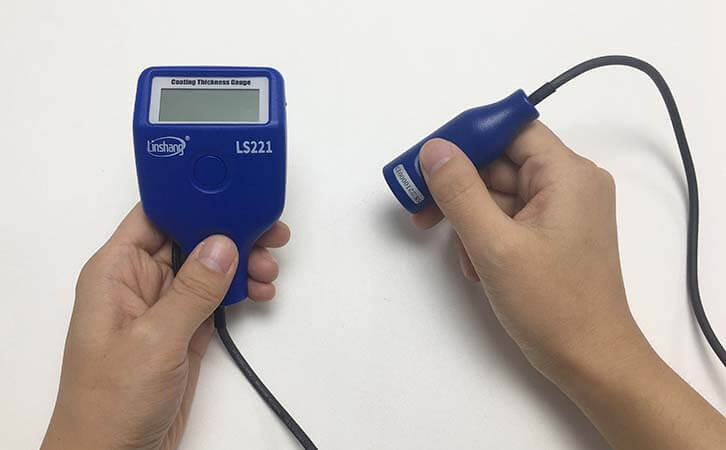Calibration and Maintenance of Coating Thickness Gauge
The coating thickness gage has been favored by many people due to its advantages such as high stability, small measurement error and convenient operation. The coating thickness gauge may seem simple, but if it is not operated properly, it will also measure the result with a large error. Therefore, in the application of coating thickness gages such as manufacturing, it is important to master the method of use in order to obtain more accurate data.
How to calibrate the coating thickness gauge? Although different coating thickness gauges have different measuring principles, the basic calibration operations are not very different. In general, two methods, single-point calibration and multi-point calibration, can be used to accurately calibrate the instrument. At present, the instruments on the market that only require zero-point calibration without multi-point calibration are Chinese brand Linshang coating thickness gauges and German Qnix coating thickness gauges. Most instruments require zero adjustment and multipoint calibrations.
Zero calibration: It is to perform zero calibration on the metal substrate of the product. First select a zero plate, which is an uncoated metal substrate. Secondly, zero calibration, then press the probe vertically and smoothly on the substrate and press the adjustment button on the instrument to automatically perform the zero calibration. The last step is to repeat the above steps to obtain a more accurate zero point and improve the measurement accuracy.
Multi-point calibration: Use standard plates for calibration. First, the zero point should be calibrated first. And secondly, a measurement is performed on a standard film having a thickness approximately equal to the expected thickness of the measured cover layer and then the reading is corrected. Finally, the measurement is performed by covering with multiple standard films and then the reading is corrected in order to reach the standard value.
Learning to calibrate the coating thickness gauge is only the first step. If you want to use the coating thickness gauge (paint thickness guage) for a long time, you must pay attention to its maintenance.
Coating thickness gauge maintenance
Select a suitable storage environment. You should avoid storing the coating thickness gauge in an excessively humid environment and at the same time clean the surface or side of the instrument in time to avoid covering with dust or other dirt.
Battery care. If the coating thickness gauge is not used for a long time, take out the battery. When selecting a battery, try to choose a high-quality battery to avoid leakage and cause corrosion of the host of the thickness gauge.
When the instrument has abnormal conditions, do not disassemble or adjust any fixed assembly parts, it should be handed over to the manufacturer for repair in time.
The above is the introduction of the calibration method and maintenance method of the coating thickness gauge. The coating thickness gauge plays an indispensable role in production and life. Therefore, mastering its calibration operation method and focusing on instrument maintenance can make it bring more convenience for our lives.
- High precision coating thickness gauge for used car
- Automotive paint protection films coating thickness gauge
- Plating Thickness Measuring Instrument for Detecting Anti-corrosion Coating
- Linshang LS220, LS191, LS160A– Necessary for Car Cover Inspection
- Coating Thickness Gauge for Second Hand Vehicle
- Zero Adjustment Step of Coating Thickness Gauge
